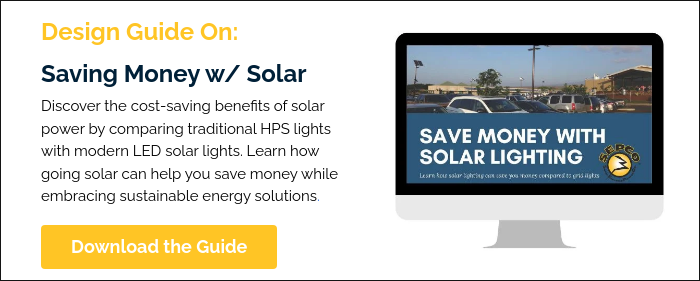5 of the Best Types of Solar LED Lighting Systems
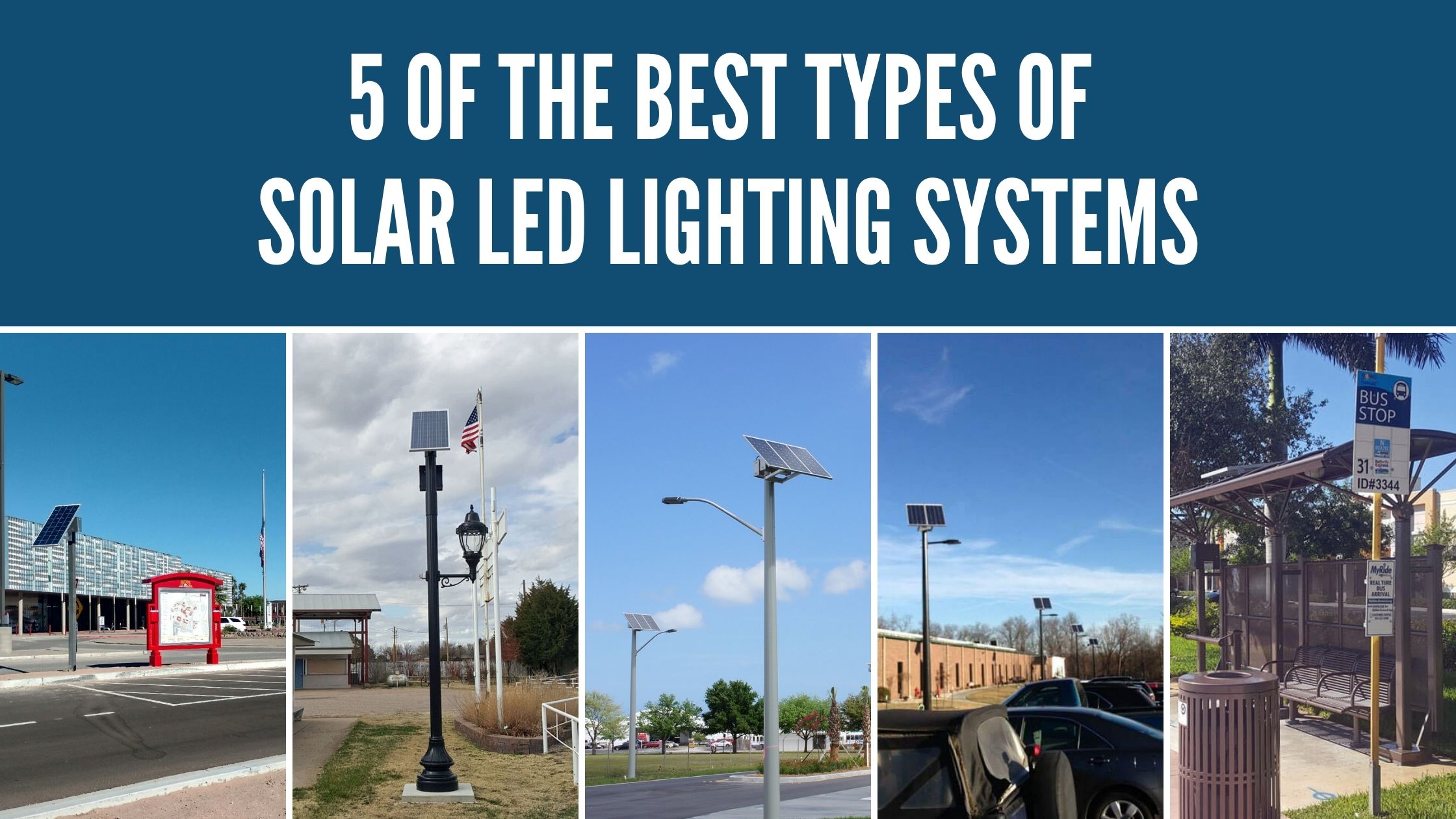
Contents
Illuminating a space for after-dark usage is key to increasing the safety and security of the area. Unfortunately, not all projects have the ability to support traditional grid-powered lighting systems. This is where off-grid solar lighting systems can come into play. Let's look at 5 of the best solar LED lighting system applications and see how they can provide a sustainable lighting solution, lower site operational costs, and increase visibility for people moving about.
What Makes a Solar Lighting System
A solar lighting system is comprised of several components that work together to capture and store energy from the sun during the day and use it to power lights at night. The main components of a solar lighting system include:
- Solar panels - these are the components that capture energy from the sun and convert it into electrical energy. Solar panels are typically made up of photovoltaic cells that are connected together to create a solar array.
- Charge controller - this component regulates the amount of energy that is stored in the battery to prevent overcharging and damage to the battery.
- Battery - this is where the energy generated by the solar panels is stored for later use. The battery is typically a rechargeable deep-cycle battery designed to withstand multiple charge and discharge cycles.
- Light fixture - this is the component that emits light and is powered by the energy stored in the battery.
- Mounting hardware and wiring – this includes the hardware and wiring needed to mount the solar panels, charge controller, battery, and light fixture to a pole or other structure and connect the various components together.
Overall, a solar lighting system is a self-contained, stand-alone system that provides reliable lighting without the need for grid power or electrical wiring. Solar lighting systems are ideal for outdoor lighting applications in areas that are remote, difficult to access, or prone to power outages. They are also environmentally friendly and cost-effective, making them an increasingly popular choice for lighting outdoor spaces.
Now that we know what makes up a solar lighting system, let's look at some of the best applications. These types of installation are most popular and why you are starting to see them installed in more spaces.
Solar Street Lights
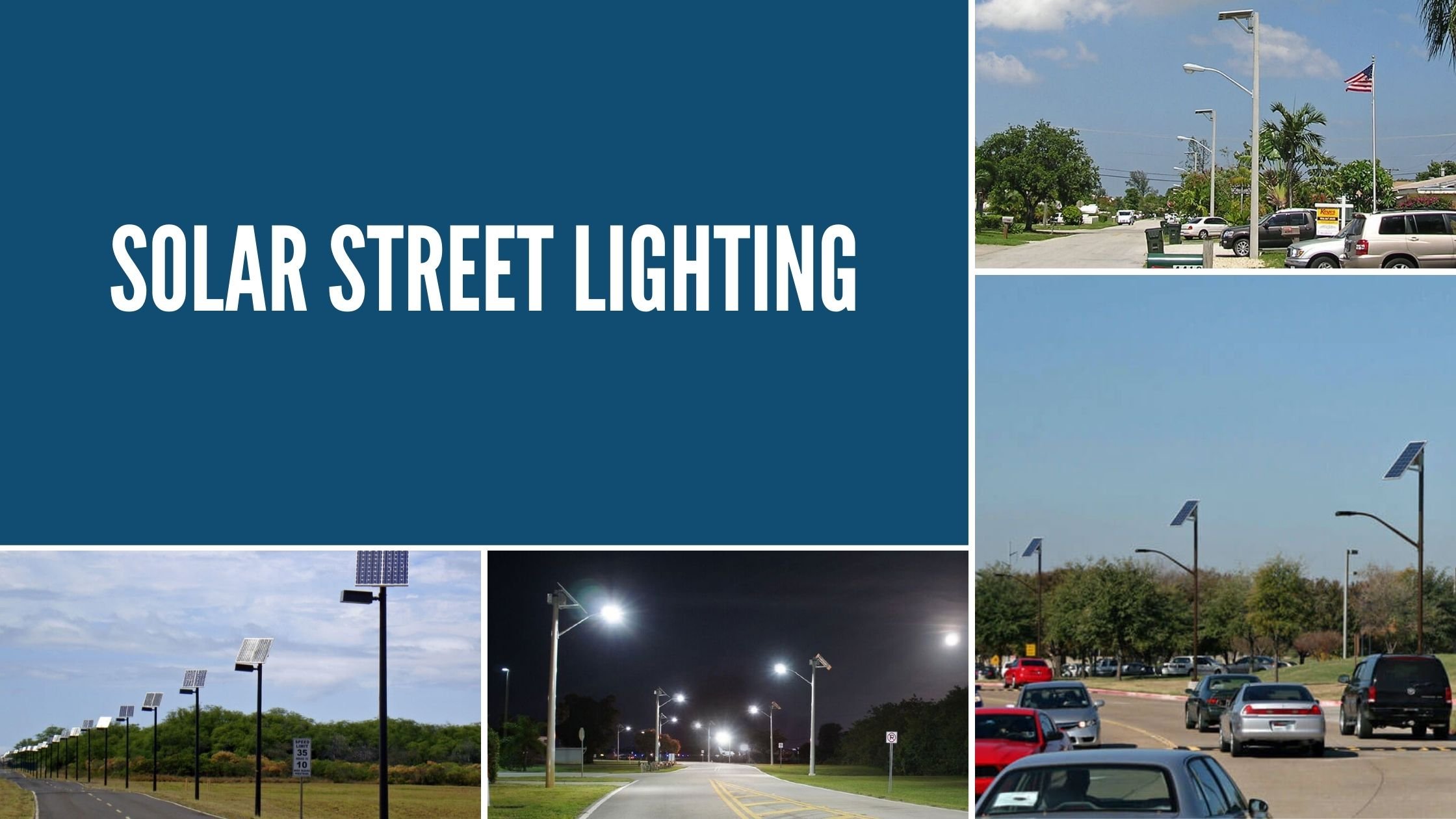
Solar street lights are a great application for solar lighting systems. Streets and roadways always need more illumination to increase safety and security for not only travelers in their cars, but also for pedestrians and wildlife safety. Good visibility along a roadway allows people to see what lies ahead and make judgments based on that information. Having no illumination along these areas does not provide the same information until the last second, causing many accidents.
Solar provides a way to illuminate the streets and roadways without having to bring in costly grid power and reducing the grid reliance for lighting. Lighting roadways costs cities and municipalities a lot of money, and many times with failing electronics, these lights can cost a great deal in energy. A solar street lighting solution would be more sustainable in the long run.
Ever drive down a roadway during the day and see all the lights on? This is because of a failing photocell. This cheap piece of equipment, generally costing a few dollars, is one thing that standard electric streetlights utilize to turn on and off. The wasted energy from these failures cause much higher costs than if the area would have just installed a solar option. There is no need to run the costly high-voltage lines and then have a minor failure that now keeps the lights on all the time, even during the day.
Solar street lights use the solar panel as the photocell. The solar charges the batteries during the day with the controller acting as the system brain. Once the controller senses that the panels are no longer providing the charge it wants to see, because the sun has set, the controller switches to having the lights come on. Not only does the solar street light system not rely on dirty grid power, it will actually work as intended.
Solar Pathway Lighting
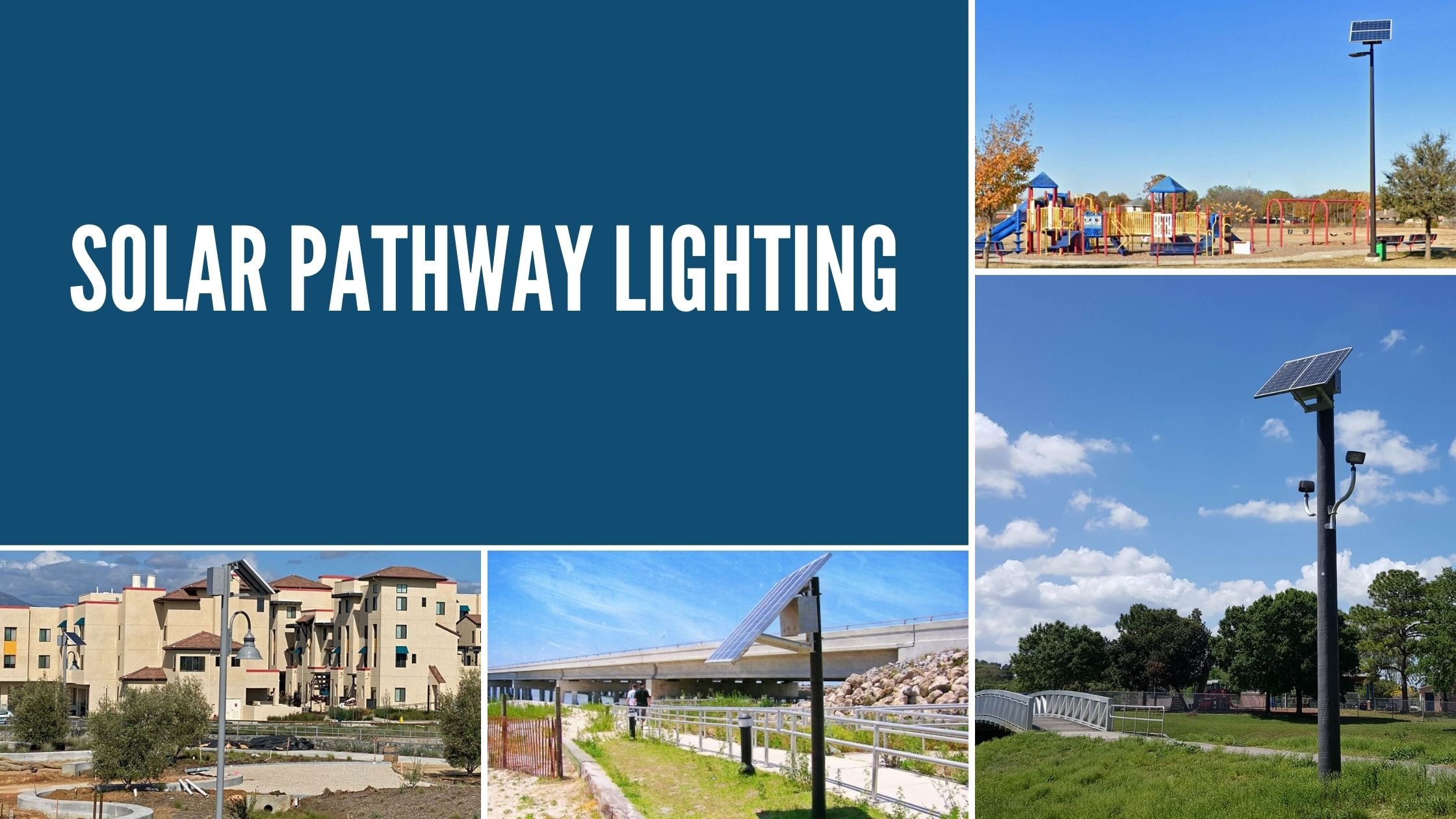
Pathways allow people to move from one place to another, either around a single space like a park, or around a business park, or even across various communities like a bike path. Many people use these pathways after dark, and having them illuminated increases the safety and security of people moving long them at night. It also allows these spaces to be used at night, allowing them to get from place to place without worrying about their personal security.
A solar pathway lighting solution can easily illuminate all these spaces. These lights can range from low level bollards, to decorative acorn style fixtures, to large overhead industrial fixtures. Bollards typically are used along short pathways since they only illuminate an small area; whereas, large overhead fixtures provide plenty of illumination across a much larger area. This means they can handle larger installations, such as miles of bike pathways like rails to trails projects.
Pathways used in business parks that close down do not typically require all-night illumination. Still, paths that allow people to commute between spaces should have illumination when people are active. This can be completed by ensuring the lights stay on all night or by implementing motion sensors. Motion sensors can either be used to activate the light from being off when motion is detected but can also be used to have the lights work at a lower output and have the motion sensors bring them back to full.
Solar Parking Lot Lighting
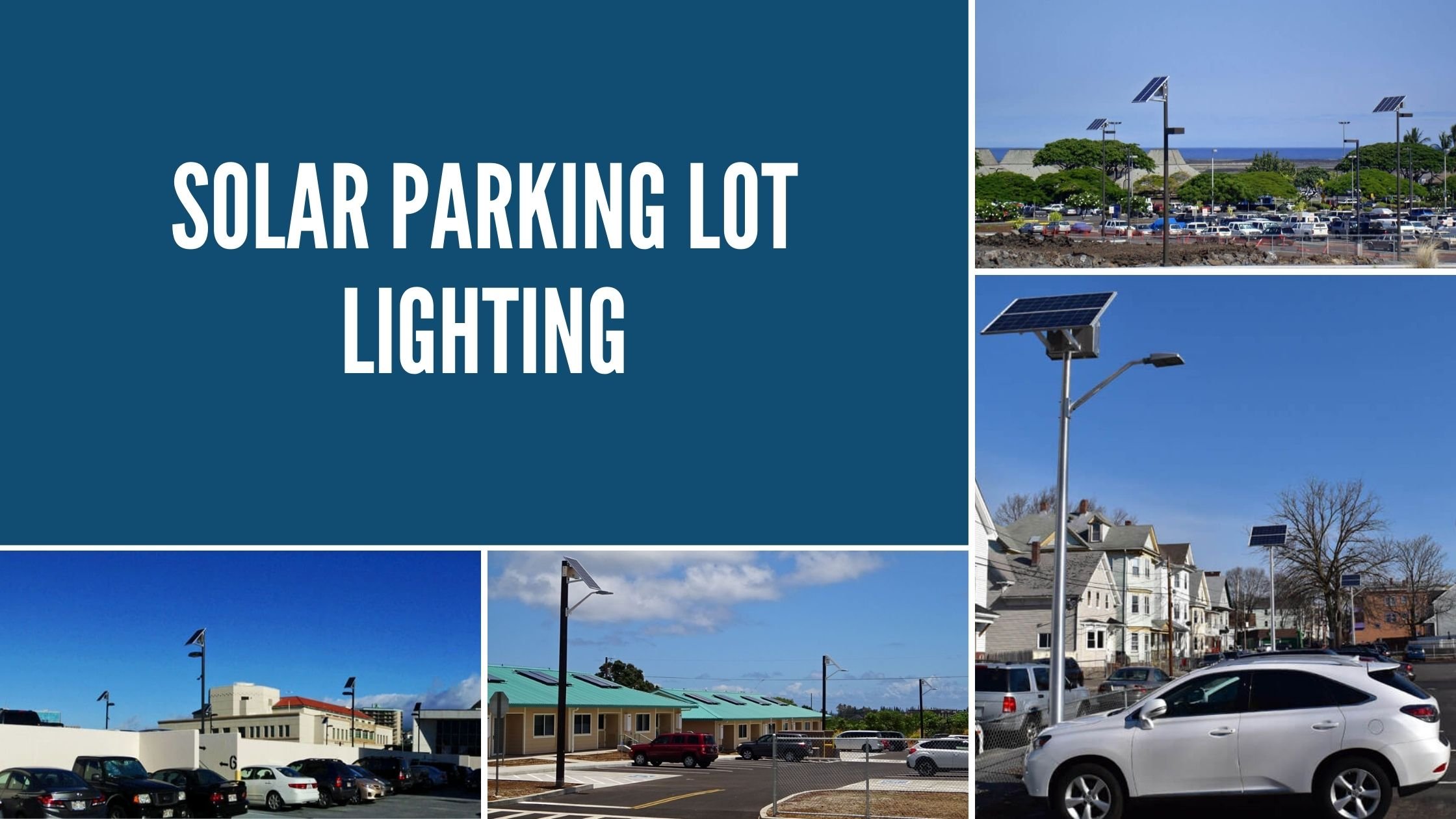
Most large shopping centers and businesses have lights in their parking lots, but many still have no lighting or inadequate lighting. In addition, some parking lots have outdated lights or failing infrastructure. These projects are a great place to install a solar lighting option for the parking lot areas.
A solar parking lot lighting system, much like the solar street lighting system, provides illumination to an area that requires additional visibility to allow people moving about to find things, see others and obstacles in the area, and move about safely. Solar parking lot lights also provide a way to increase illumination to exiting parking lots or replace the failing infrastructure with self-contained lights.
Instead of trenching through existing concrete to fix failing infrastructure, which can be very costly, a solar lighting system for parking lots contains all the wiring on a single pole. Therefore, all you have to do is replace the foundation of the pole and install a new pole with a solar light system. Sometimes, you can get a one-to-one replacement, but this isn't always the case. Having a commercial lighting solution engineer do a lighting plan will allow you to see what type of illumination you can expect in your parking lot.
Solar parking lot lighting systems are also a great way to provide a sustainable solution for outdoor lighting when developing a new site. Architects and engineers can design in a solar parking lot lighting solution for the spaces around a new apartment complex, office center, parks and recreation facilities, and so much more. These can reduce the impact on the site, deliver an image of sustainability, and provide a way to reduce the overall operational costs of the facility.
Solar Sign Lighting
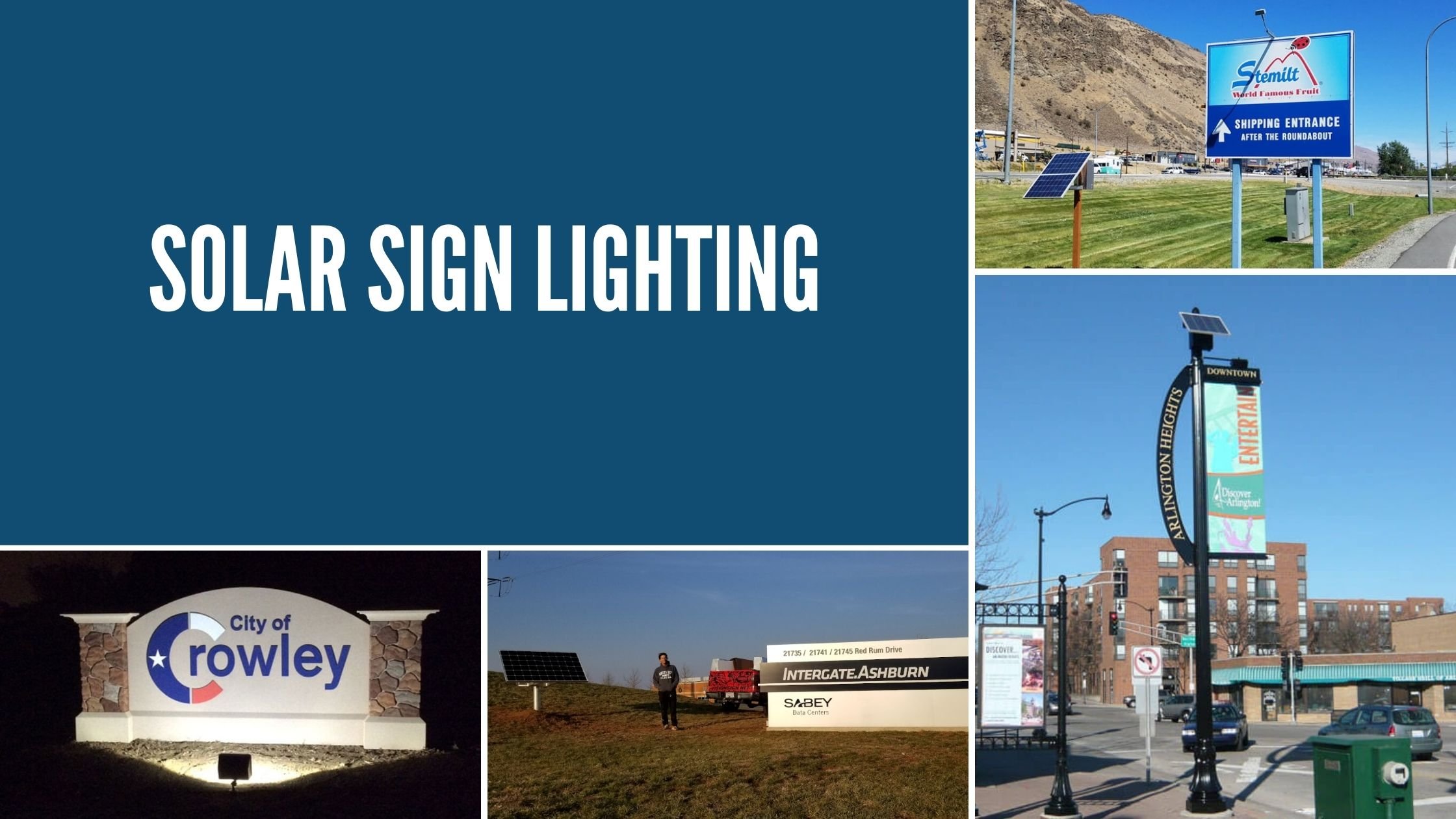
Signs provide so much information to travelers around an area. In a park, it shows what is nearby or how to get to the next place. In an office park, it tells people where to find specific companies. Signs provide markers for entrances and exits of a space. Having signs illuminated at night, at least during high traffic times, provides this information to people moving around at night and keeps them on track.
Signs tend to be installed in odd places, sometimes not near a source of energy like in a median or a remote location. This is where a solar sign lighting solution is the best course of action. Not only will you save money by not having to extend the energy grid out to the site of the sign, but also save on energy costs in the long run. Without AC power, these small units provide the lighting without high powered transmission lines. Instead, low voltage DC power provides the energy to the light fixtures, operating them per the controller's settings, and lowering installation costs.
Solar can provide illumination for both internal LED and flood illuminated signs. A few pieces of information need to be considered when sizing up the solar unit, but for the most part, all you need is the size of the sign, whether it is single or double-sided, and the project location to get the ball rolling. If you are using internal LED modules, provide the manufacturer with how many LED modules you will be using and the power consumption of the module.
Solar sign lighting systems can also be sized to illuminate the area around the sign, for tree uplights and other landscape lighting needs. Instead of needing multiple solar units, each powering their own fixture, one larger unit can be used to power a multitude of fixtures. This would lower costs and increase reliability since only one set of equipment providing the power is responsible for all the fixtures.
Solar Lighting for Transit Systems
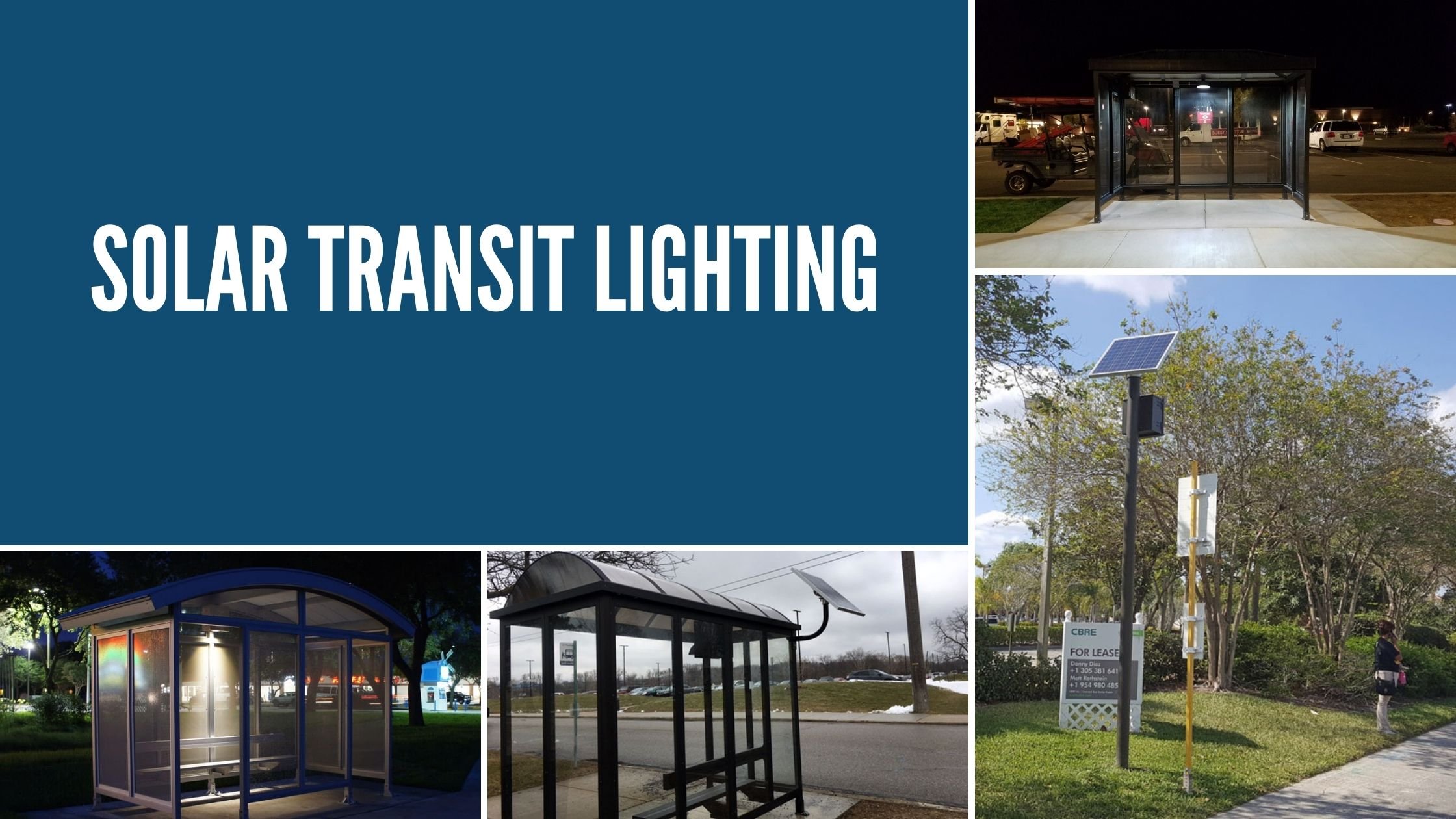
Many transit systems operate well after dark, moving from stop to stop at night to pick up and drop off riders. Having illumination at the stops allows for increased safety and security for passengers while they are waiting for the next bus to come along. It also increases the safety of passengers, allowing bus drivers to see the people as they arrive at the stop.
The lights on bus shelters or bus stops do not need to operate all night, but at least during operational hours and a little time before and after. The lights can also operate via motion to ensure that if anyone is inside the bus stop area, the lights will come back on and then shut off once the people have left the space.
Many bus shelters do not automatically come with the ability to adapt to solar installation quickly; however, there are a few ways around that. We have developed a bracket that mounts on the side of a structure to allow for the solar to mount. It also provides for shelters located in snowy areas to have the solar mounted at the proper angle. Many manufacturers just tell transit companies to install solar panels on the roof; however, snow, shade from trees (many shelters and bus stops are under trees), and other obstacles cause problems with the function of the solar.
Bus stops are much easier to handle. The solar system can be easily installed at the top of a pole to illuminate the area below. These systems are easier to install as they don't need to be modified to incorporate the solar lighting system at a later date. Bus stops are open areas, sometimes including a bench, but no structure that would require the solar panel, battery assembly, or light fixture to mount on.
Why You Should Use Solar on Your Next Project
In conclusion, using a solar lighting system for your next project is a bright and environmentally conscious choice. Solar lighting systems provide reliable lighting without grid power, which can be installed in remote locations or areas with frequent power outages. Additionally, solar lighting systems are cost-effective, as they do not require costly trenching and wiring and have a longer lifespan than traditional lighting systems.
Furthermore, solar lighting systems are sustainable and environmentally friendly. They help to reduce greenhouse gas emissions and the dependence on fossil fuels, making them an excellent choice for those looking to reduce their carbon footprint. With technological advances, solar lighting systems are becoming even more efficient and cost-effective, making them an increasingly popular choice for outdoor lighting.
Overall, a solar lighting system is a practical and reliable solution for your lighting needs that can provide long-term cost savings while also being environmentally responsible. So if you're looking for a sustainable lighting solution for your next project, consider using a solar lighting system.

